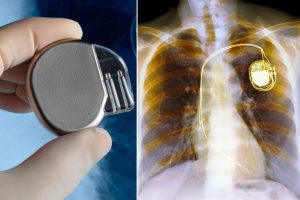Researchers at Shanghai Jiao Tong University have postulated that cardiac pacemakers may be able to use the human heart itself as a battery. One member of the team, Yi Zhiran, presented findings to this effect at the AIP Publishing Horizons -- Energy Storage and Conversion virtual conference in early August during his "Mechanism on Buckled Piezoelectric Energy Harvesting for Batteryless Heartworn Pacemaker” seminar.
Contemporary pacemakers rely on battery-powered means to help hearts maintain regular beat patterns. The main challenge for batteryless pacemaker and leadless pacing advocates is replicating the necessary power through the scavenging of kinetic energy. That crucial form of conductivity, called buckled piezoelectric energy, is amassed from the buckling of a pacemaker’s structure.
Of the difference in these forms of power, Zhiran said, “If the practical force of the heart is 0.5 newtons, the output power should be about 192 microwatts. Therefore, for the commercial pacemaker, just about no less than 10 microwatts is sufficient for its normal work.”
The batteryless pacemaker remains in the feasible verification phase, according to Zhiran. His group is striving to mitigate the many known pitfalls of the invention. These include as-of-now undecided implanting methods,lack of long-range stability in vivo, and the troublesome integration between the flexible harvesting unit and the rigid pacing chip -- the last of which is first on the docket for Zhiran’s team. Regardless, all of these issues must be solved with complete transparency in order for the project to progress further.























